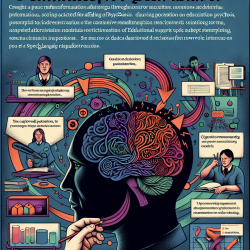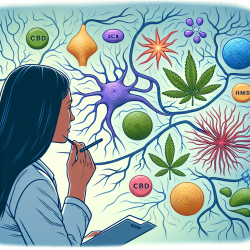Introduction
In the realm of educational data analysis, the ability to effectively interpret and visualize data is crucial for practitioners. The research article "Descriptive statistics and visualization of data from the R datasets package with implications for clusterability" by Brownstein, Adolfsson, and Ackerman provides a comprehensive guide to utilizing descriptive statistics and visualization techniques for assessing the clusterability of datasets. This blog post will explore the key findings of the research and how they can be applied to improve the skills of educational data analysts.
Understanding Descriptive Statistics and Visualization
The research highlights the importance of descriptive statistics and visualization in understanding the structure and characteristics of datasets. Descriptive statistics, such as means, medians, ranges, standard deviations, and standard errors, provide a summary of the data's central tendencies and variability. Visualization techniques, including two-dimensional plots and histograms, offer a visual representation of the data, making it easier to identify patterns and relationships.
Applications in Educational Data Analysis
For educational practitioners, the ability to analyze and interpret data is vital for making informed decisions. By applying the methods outlined in the research, practitioners can enhance their data analysis skills in several ways:
- Data Comprehension: Descriptive statistics provide a quick overview of the dataset, allowing practitioners to identify key characteristics and outliers. This understanding is crucial for determining the suitability of the data for specific research goals.
- Visual Insights: Visualization techniques, such as scatter plots and histograms, enable practitioners to visually assess the distribution and relationships within the data. This visual insight aids in identifying potential clusters and patterns.
- Clusterability Assessment: The research emphasizes the use of pairwise distances and principal component analysis (PCA) for assessing clusterability. By reducing data dimensions and visualizing these reductions, practitioners can evaluate the potential for clustering and identify meaningful groupings within the data.
Encouraging Further Research
The research article provides a foundation for further exploration into the clusterability of datasets. Practitioners are encouraged to delve deeper into the following areas:
- Advanced Visualization Techniques: Explore additional visualization methods, such as heatmaps and 3D plots, to gain deeper insights into complex datasets.
- Clusterability Methods: Investigate different clusterability assessment techniques and their applicability to various types of educational data.
- Integration with Machine Learning: Consider how machine learning algorithms can be integrated with descriptive statistics and visualization to enhance data analysis and decision-making processes.
Conclusion
By leveraging the insights from the research article, educational data analysts can significantly improve their skills in data interpretation and visualization. The use of descriptive statistics and visualization techniques not only enhances the understanding of datasets but also facilitates the identification of meaningful patterns and clusters. As practitioners continue to explore and apply these methods, they will be better equipped to make data-driven decisions that positively impact educational outcomes.
To read the original research paper, please follow this link: Descriptive statistics and visualization of data from the R datasets package with implications for clusterability.










